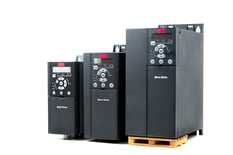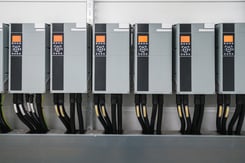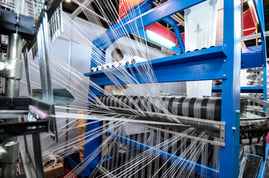 AC and DC are different types of voltage or current used for the conduction and transmission of electrical energy.
AC and DC are different types of voltage or current used for the conduction and transmission of electrical energy.
AC stands for alternating current. AC Drives are frequency converters designed to control the speed and torque of an electric motor. The speed is controlled by changing the frequency of the electrical supply to the motor.
The types of motors that ac drives control normally operate at constant speed. Enabling the user to control the speed of motor potentially gives the user benefits in terms of process control and energy savings.
DC stands for direct current. DC motor drives are a type of amplifier or power modulator that integrate between the controller and a DC motor.
It takes the low current and then converts it into a high current which is appropriate for the motor.
 Despite the popularity of AC drives, DC drives have favorable characteristics that prove to be appropriate for many applications. The characteristics of a DC Drive include: speed changes that are made by increasing or decreasing the amount of DC voltage fed to the motor from the drive, low cost for medium and high HP applications, wide speed range and good speed regulation. DC drives can also be very compact in size.
Despite the popularity of AC drives, DC drives have favorable characteristics that prove to be appropriate for many applications. The characteristics of a DC Drive include: speed changes that are made by increasing or decreasing the amount of DC voltage fed to the motor from the drive, low cost for medium and high HP applications, wide speed range and good speed regulation. DC drives can also be very compact in size.
 The major advantage that AC electricity has over DC electricity is that AC voltages can be readily transformed to higher or lower voltage levels, while it is difficult to do that with DC voltages. Since high voltages are more efficient for sending electricity great distances, AC electricity has an advantage over DC.
The major advantage that AC electricity has over DC electricity is that AC voltages can be readily transformed to higher or lower voltage levels, while it is difficult to do that with DC voltages. Since high voltages are more efficient for sending electricity great distances, AC electricity has an advantage over DC.
AC and DC Drives are used in many industrial applications including:
Hoisting and lowering
Crane travel
I-Beam Trolley travel
Paper Industry (pulp and paper making)
Textile Industry (weaving and spinning)
Conveyors
Compressors
Pumps
To learn more about Radwell International,
For a behind-the-scenes look at Radwell International, visit


